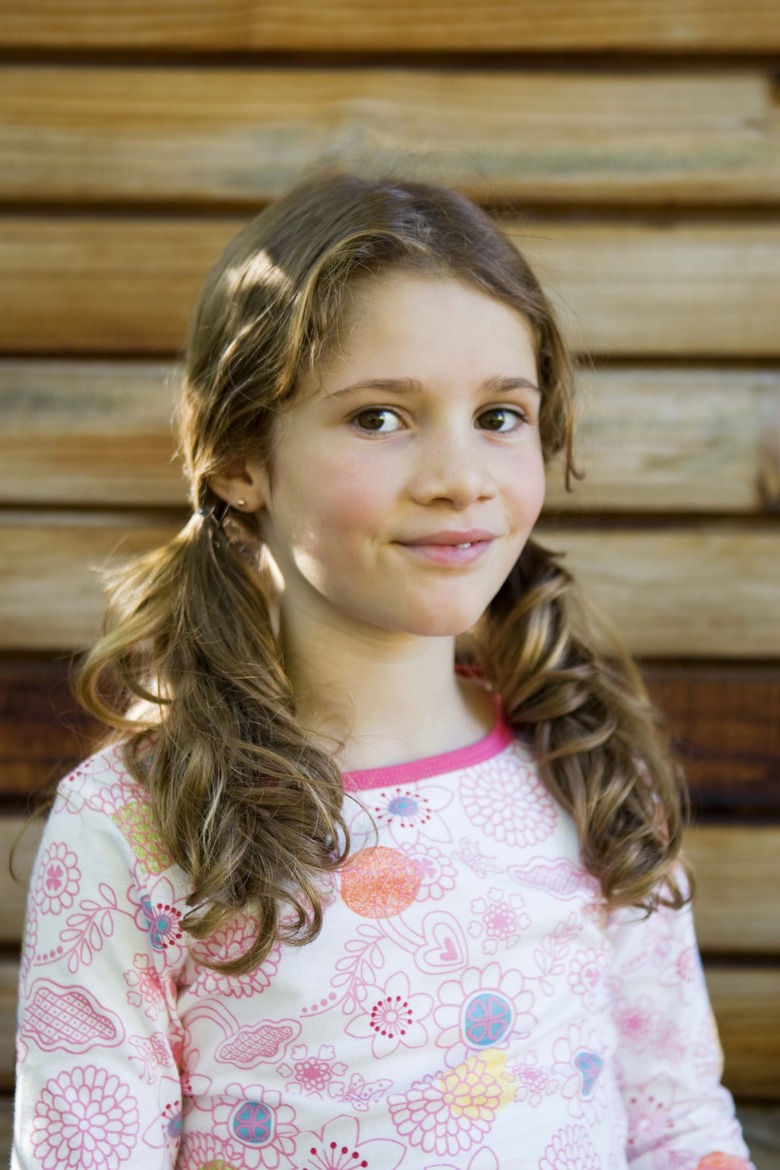What Is The Physical Expression Of An Allele?
What you see is not always what you get, at least in heredity. Genetic information of identical twins, who came from the same fertilized egg, is as similar as it gets. However, even these siblings can show differences because of variations in genes and environmental effects. An individual receives genetic material, or alleles, from both parents, and the way those alleles combine can be complicated. Your appearance does not tell the whole story behind your genetic instructions.
The Nuts and Bolts
The Nuts and Bolts
The basics of heredity begin with DNA. Genes are made from this chemical and carry instructions for protein production in the cell. Organisms use these directions for growth, development and daily life functions, such as digestion and heartbeat. Genes are arranged on chromosomes, most of which are located in the nuclei of an organism's cells. Organisms that breed through sexual reproduction have two matching sets of chromosomes, one from each parent. The number of chromosomes varies among species. While fruit flies have 4 pairs of chromosomes, humans have 23. Potatoes and chimpanzees each have 24 pairs.
Allele Essentials
Allele Essentials
Genes carry information for the physical, behavioral and health-related traits of an organism. Genes for the same trait may come in two or more versions called "alleles." For example, brown hair color has many possible alleles, from very light to very dark. Parents pass along one allele for each gene to their offspring. If both mother and father donate the same allele, the offspring is "homozygous" for that trait. The offspring is "heterozygous" for a trait if he or she has received a different allele from each parent. If an allele is dominant, it will always be expressed, hiding the other recessive allele. The combination of alleles is an organism's genotype.
Dominant and Recessive
Dominant and Recessive
Alleles are often represented with letters. Capital letters are used for dominant alleles, while recessive alleles are indicated by lower-case letters. For example, cystic fibrosis (CF) is a chronic lung disease carried by a recessive allele. A "C" is used to represent the allele without the disease, while "c" indicates an allele that carries CF. An individual homozygous for CF has the allele combination cc, while someone homozygous for not having the disease has the alleles CC. An individual heterozygous for CF — that is, possessing the allelelic combination Cc — would not have the disease because the allele for developing CF is recessive. He or she could have offspring with CF, however, if the other parent of their offspring is also heterozygous for CF.
Codominance and Incomplete Dominance
Codominance and Incomplete Dominance
But heredity is not always so simple. In "codominance," both alleles show up in the expression of the trait. One example is the roan coat (a mix of white and red hairs) seen on some horses and cattle — the result of breeding a homozygous red animal with a homozygous white one. With "incomplete dominance," the characteristic appears as a mixture of both alleles. For example, if red four o'clock flowers breed with white ones, they will yield pink offspring. In addition, many traits are influenced by multiple genes, such as eye and hair color in humans.
What Turns Up
What Turns Up
The physical expression of an individual's genotype is called its phenotype. For the cystic fibrosis gene, the two possible phenotypes are having the disease or not having it. With traits that are influenced by several genes, such as hair color, the phenotype can fall within a wide range, from platinum blonde to espresso black. Phenotype is also influenced by an organism's environment. Climate, diet, accidents, culture and lifestyle can affect how the phenotype is expressed. Plants with identical genotypes for height may develop differently due to environmental differences in sunlight, water and minerals. Therefore, the phenotype for some individuals may be tall, while others are significantly shorter. Environment factors can even impact individuals across generations. For example, laboratory mice fed specific chemicals became obese and passed this trait along to their offspring, which were overweight even without the additives. The study of how environmental changes influence genetics, epigenetics, is a promising research field, especially for health issues.
References
- Scientific American: Identical Twins' Genes Are Not Identical
- NIH: The Genetic Basics: What Are Genes and What Do They Do?
- UC Santa Barbara: Science Line: Chromosomes
- Indiana University: Genetics: Reality Rears Its Head
- Kansas State University: Division of Biology: Definitions for Terms in Genetics Problems
- BBC Bitesize: Recessive and Dominant Alleles
Cite This Article
MLA
Sherwood, Susan. "What Is The Physical Expression Of An Allele?" sciencing.com, https://www.sciencing.com/physical-expression-allele-19904/. 24 April 2017.
APA
Sherwood, Susan. (2017, April 24). What Is The Physical Expression Of An Allele?. sciencing.com. Retrieved from https://www.sciencing.com/physical-expression-allele-19904/
Chicago
Sherwood, Susan. What Is The Physical Expression Of An Allele? last modified August 30, 2022. https://www.sciencing.com/physical-expression-allele-19904/
